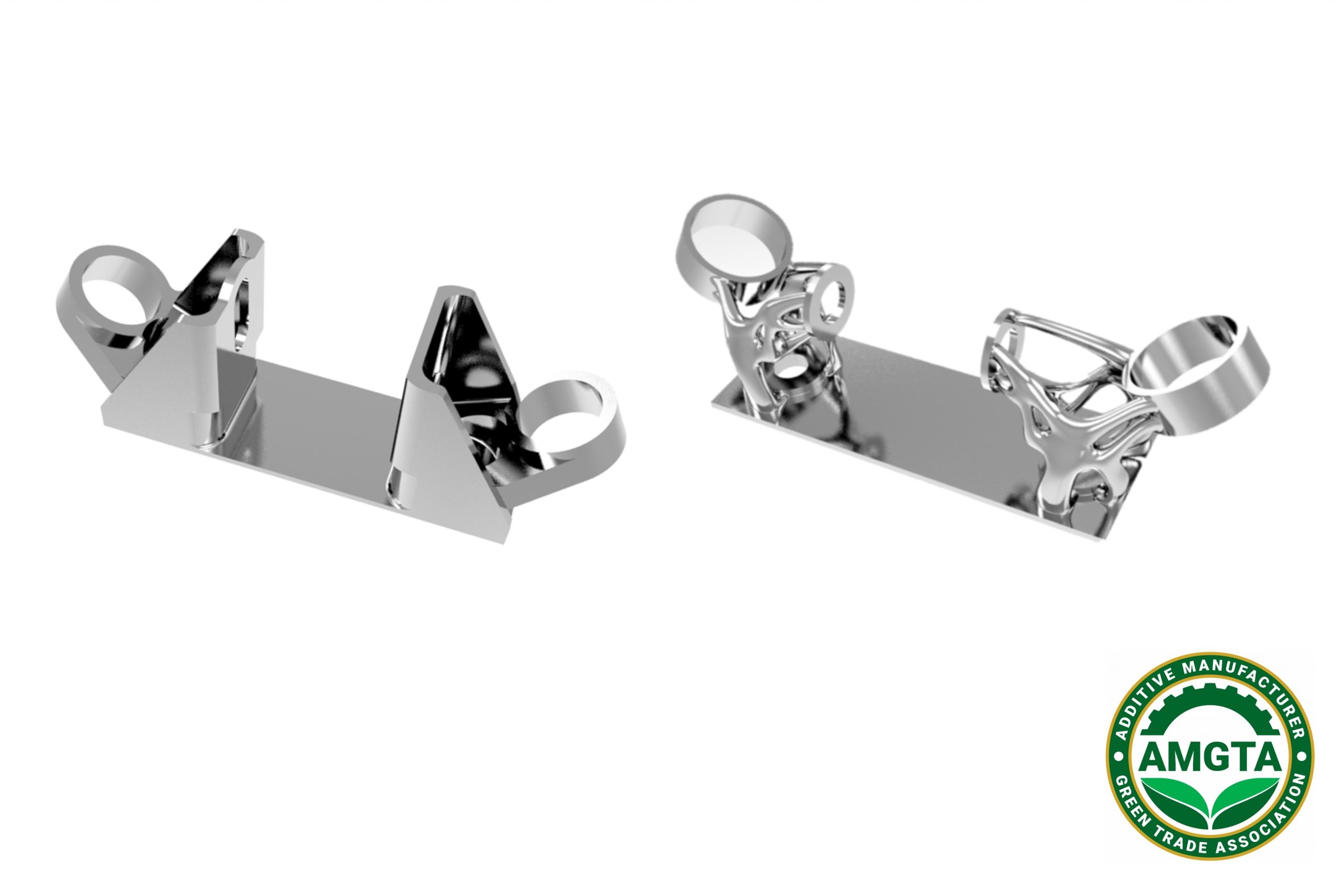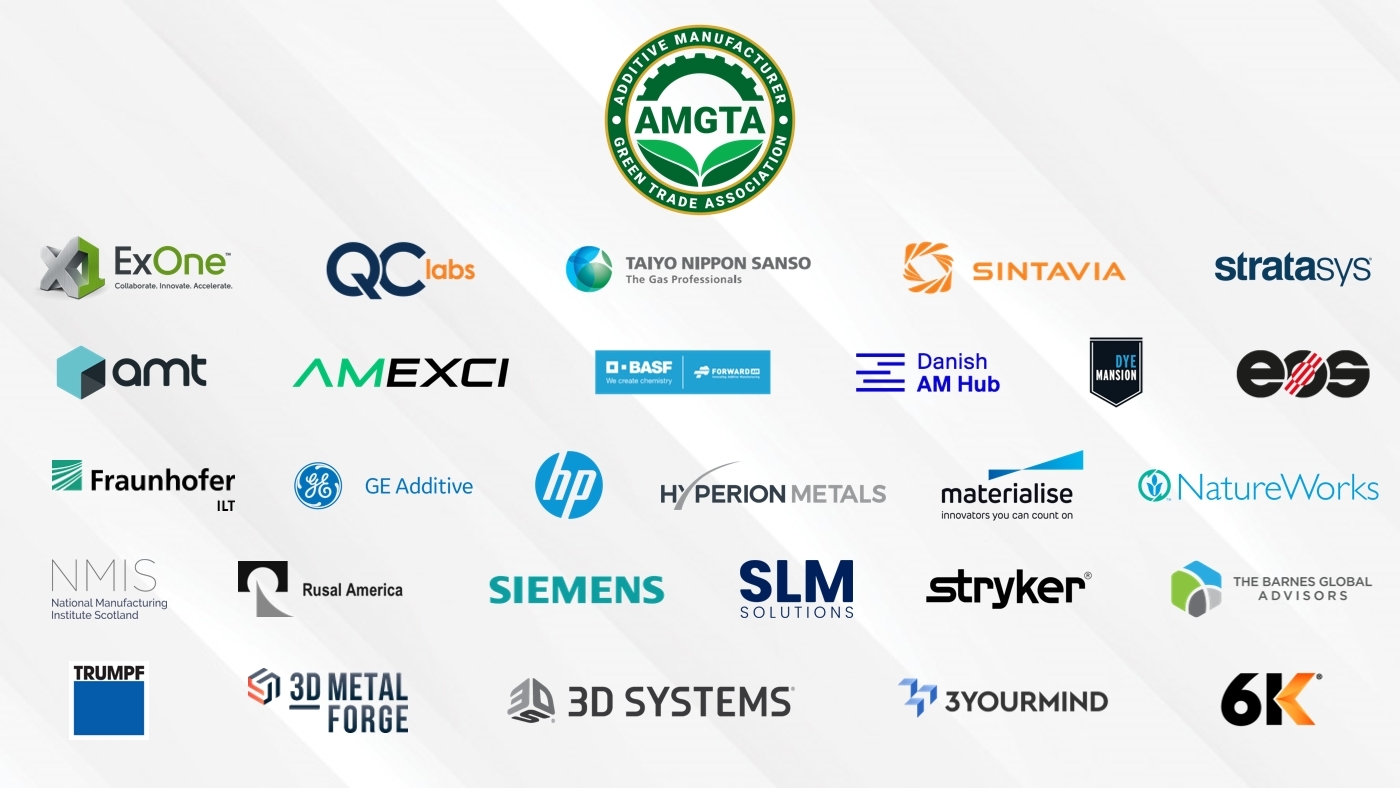The Additive Manufacturer Green Trade Association (AMGTA) has announced the launch of its latest research project; a life-cycle assessment (LCA) comparing a 3D printed aerospace component to one that is traditionally manufactured.
The Golisano Institute for Sustainability (GIS) of the Rochester Institute of Technology (RIT) has been chosen to carry out the LCA, which will compare the cradle-to-grave environmental impacts of a jet engine low-pressure turbine (LPT) bracket produced via traditional manufacturing methods with one that is 3D printed.
“This new study will include up to 18 different environmental indicators to quantify the environmental impacts that an optimized jet engine LPT bracket has throughout its entire life cycle – from material extraction, manufacturing, transportation, use, and its eventual end-of-life,” said Sherry Handel, AMGTA’s Executive Director.
“This data will then be compared to a traditionally designed and manufactured LPT bracket to determine where exactly powder bed fusion AM technology results in lower environmental impacts.”

The role of the AMGTA
Established in 2019 by Sintavia, Taito Nippon Sanso Corporation and QC Laboratories, the AMGTA’s goal is to promote the green credentials of 3D printing and advance sustainability within the sector.
In November last year, a further dozen 3D printing companies joined the association, including the likes of GE Additive, Materialise, Siemens Digital Industries, EOS, and others. In August, Stratasys became the latest 3D printing firm to join the AMGTA, as the company seeks to further its commitment to achieving circular economy processes, climate action, and social change within the additive manufacturing industry.
As part of its mission, the AMGTA has conducted previous research into the environmental effects of additive manufacturing, having published its first commissioned university research paper on the sustainability effects of metal 3D printing last year.

The AMGTA’s first LCA research project
Now, the organization is turning its attention to carrying out LCAs of 3D printed components in comparison to those that have been manufactured by conventional techniques.
The GIS at the RIT will be responsible for conducting the LCA, which will be ISO 14040 compliant. The research project will compare the environmental effects of a 3D printed jet engine LPT bracket with one that has been produced via traditional manufacturing.
Each stage of the LPT bracket’s production will be scrutinized, from material extraction and manufacturing to the part’s transportation, use, and end-of-life. The LCA report will be peer-reviewed by a panel of experts to ensure the project’s methodology, data, assumptions, results, and conclusions are accurate.
Once peer-reviewed, the report is expected to be published in spring 2022, with the project’s key findings to be announced at next year’s RAPID + TCT in May.
Going forwards, the AMGTA plans to continue to publish additional research reports with the aim of advancing environmental sustainability within the 3D printing industry.

Improving sustainability in AM
As companies around the world have continued to realize the sustainability benefits of leveraging 3D printing for their manufacturing operations, there has been a flurry of activity in the repurposing of waste for 3D printing materials, the development of fully biodegradable filaments and recyclable powder materials, and addressing resource efficiency by substituting fossil-based materials.
As such, the likes of global transit manufacturer Wabtec and fluid power systems manufacturer Domin have realized the environmental positives of integrating 3D printing into their operations, such as slashing carbon dioxide emissions.
Elsewhere, multiple 3D printing companies have committed to improving sustainability within their own manufacturing processes, with examples including ExOne’s #MakeMetalGreen social media campaign, and EOS’ selection as part of the 50 Sustainability and Climate Leaders Initiative.
Subscribe to the 3D Printing Industry newsletter for the latest news in additive manufacturing. You can also stay connected by following us on Twitter and liking us on Facebook.
Looking for a career in additive manufacturing? Visit 3D Printing Jobs for a selection of roles in the industry.
Subscribe to our YouTube channel for the latest 3D printing video shorts, reviews and webinar replays.
Featured image shows the AMGTA has commissioned its first LCA research project. Photo via Sintavia.


